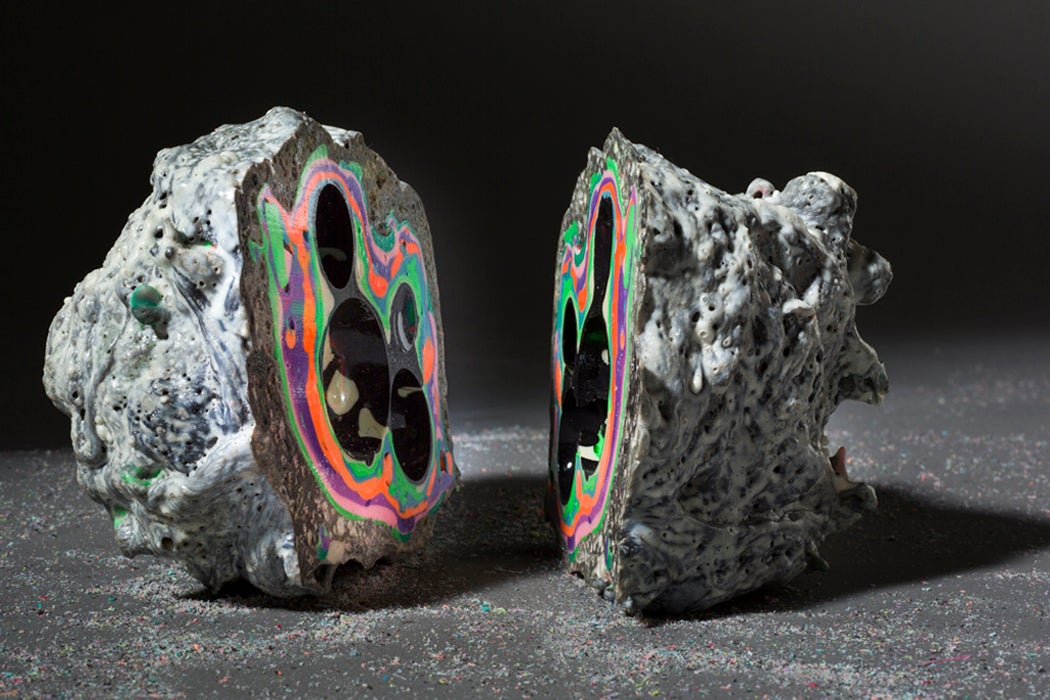Geodes have long captured the attention of geologists and the imagination of artists. Formed over many years, minerals such as quartz and amethyst dissolve and seep into air pockets and volcanic hollows. As they continue to grow inside the rock’s shell, they form beautifully dense crystals hidden behind an unassuming rock exterior.
Sculptor Elyse Graham makes fabulously bright, geode-inspired sculptures using latex and urethane. She will be showing her geodes and other sculptures at The Architectural Digest Home Design Show in New York City March 19th through March 22nd. Process-wise, Graham uses bundles of inflated balloons to create a clustered base around which to build the latex, urethane, and plaster layers. The interior air pockets become the void around which the geode is built and the center upon which viewers focus, and it is this negative space that Graham indirectly sculpted with her own breath.
Graham’s contemporary ode to a geode is not a new fascination, as historically writers and poets have attempted to put into words the wonder that the natural form of a geode truly encompasses.
Some poets have used geodes as a figurative jumping-off points of inspiration. In Robley Wilson Jr.’s Geode, published in The North American Review in 1969, for instance, Wilson employs the geode as a symbolic referent in his poem, isolating his character in a solitary crystal world.
In other cases, writers have used them more literally, teasing out their awe at one of nature’s most natural and inspiring wonders. Charles Wasserburg’s Geode from a 1990 Poetry journal, is a glowing recollection:
…its crystals glittered, a sea
of amethystine quartz
frozen around glassyspires, gray-purple, cold,
and shining brilliantly,
a city it seemed you could hold.
Jared Carter’s 1978 poem Geodes teases out the integral fact of time and patience required for both nature and artist to form a geode, as Graham’s process beautifully mimics as she builds anticipatory layer after layer before drying and awaiting its reveal:
They are useless, there is nothing
To be done with them, no reason, onlyThe finding: letting myself down holding
To ironwood and the dry bristle of rootsInto the creekbed, into clear water shelved
Below the outcroppings, where crawdads spurtThrough silt. Clawing them out of clay, scrubbing
Away the sand, setting them in a shaft of lightTo dry. Sweat clings in the cliff’s downdraft.
I take each one up like a safecracker listeningFor the laps within, the moment crystal turns
On crystal. It is all waiting there in darkness.I want to know only that things gather themselves
With great patience, that they do this forever.







